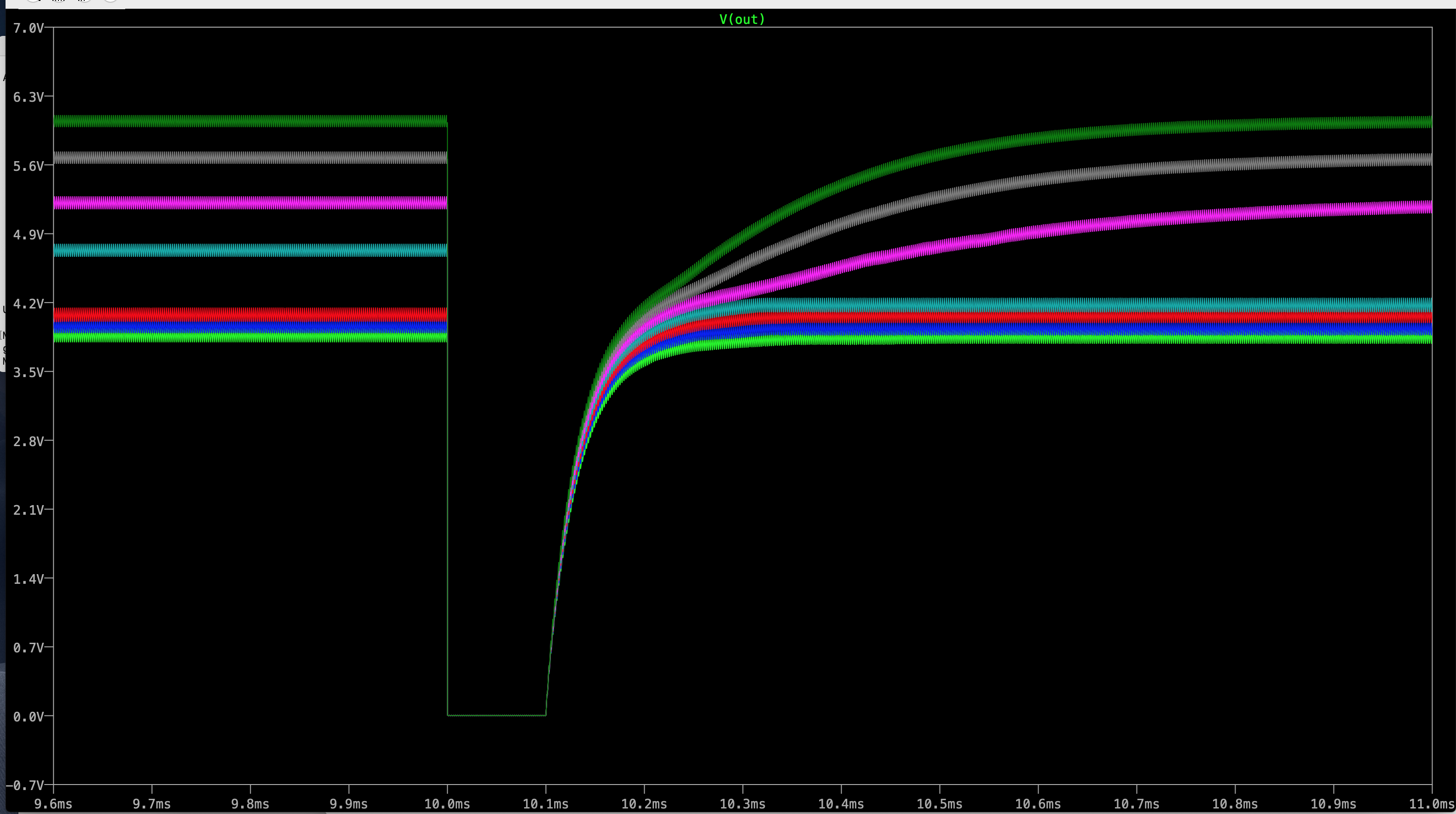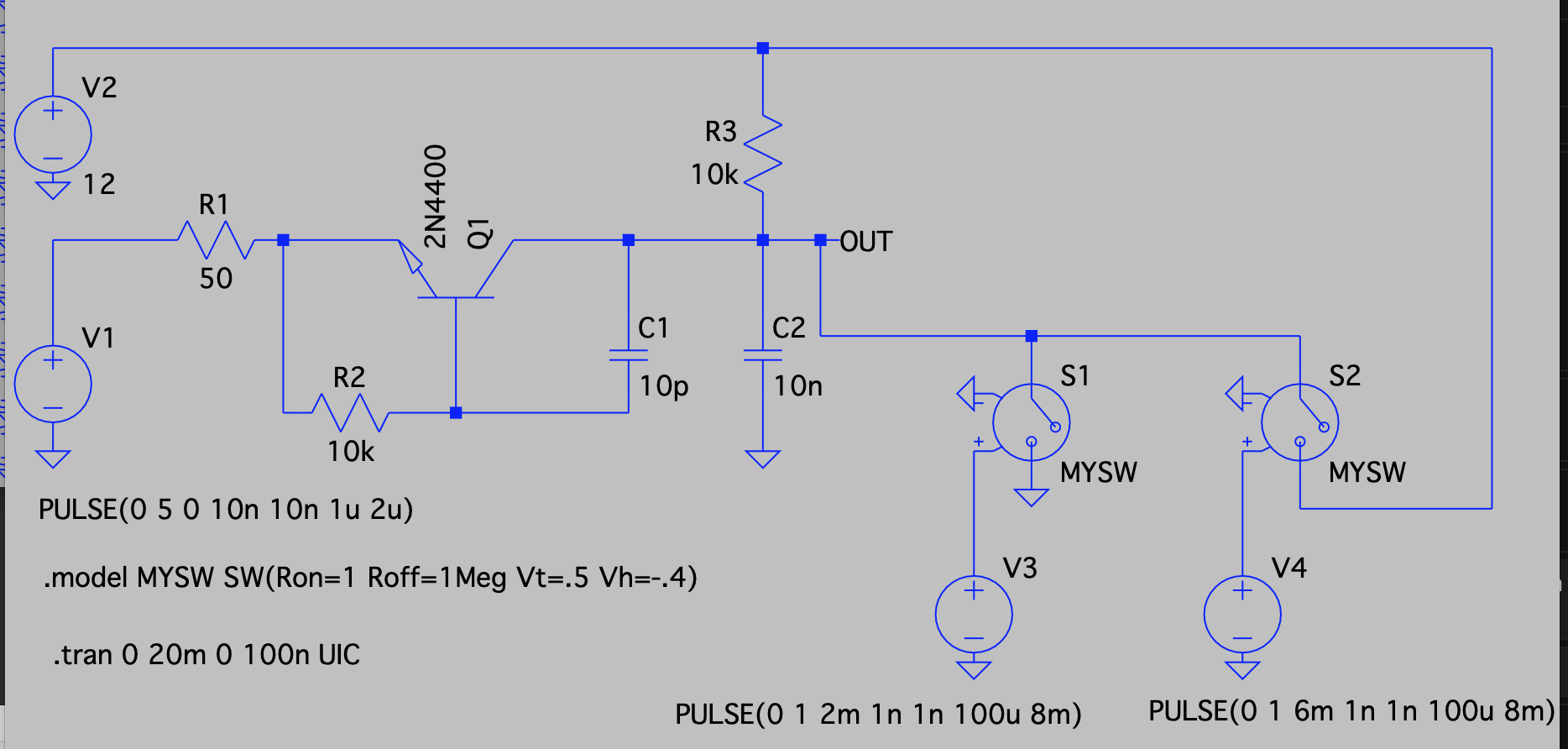-
Varicaps
02/17/2019 at 09:35 • 0 commentsSince the operation of this latching design is built around the voltage dependent capacitance of the base-collector junction in the transistor I had a quick peek at the "varicap"-entry in Wikipedia where the following is written:
Substitutes for varicap diodes
All semiconductor junction devices exhibit the effect, so they can be used as varicaps, but their characteristics will not be controlled and can vary widely between batches.
Popular makeshift varicaps include LEDs,[5] 1N400X series rectifier diodes,[6] Schottky rectifiers and various transistors used with their collector-base junctions reverse biased,[7] particularly the 2N2222 and BC547.[clarification needed] Reverse biasing the emitter-base junctions of transistors also is quite effective as long as the AC amplitude remains small. Maximum reverse bias voltage is usually between 5 and 7 Volts, before the avalanche process starts conducting. Higher-current devices with greater junction area tend to possess higher capacitance.
I wonder if the reason for the 2n2222/bc547 simply is that they are just jellybean parts that people already have at hand and is just using it because of that. Not that they have any particulary good (or in most circuits - bad) BC capacitance and voltage dependency of it. It's not like those two transistors can be classified as higher-current devices.... -
Sweeping VCC from 11.25 to 12.75 volts
02/15/2019 at 22:48 • 0 commentsThe design seems to be extremely sensitive to any changes in the parameters. Just for fun I swept the VCC from 11.25 to 12.75 volts in steps of 0.25.
The zoomed in step from a high logic level to the low logic level shows that the 12 volts (cyan) have a much larger difference between logic high and low than the others.
Changing other values have basically the same drastic effect.This dosen't fill me with any great hope to get this working with actual parts, but I'll for sure try it regardless.
![]()
-
Initial chat conversation
02/15/2019 at 19:52 • 0 commentsMatseng
@Ted Yapo , this link describes a latch a single transistor pulsed latch - I'm getting a feeling that it might be up your alley and that you might have some pointers for values and frequencies to use for trying it out. I couldn't get it anyway even close to working using ltspice - but I guess that that's just reasonable since it's based on changes in the CB capacitance that might not (?) be fully supported in most transistor models there..https://web.archive.org/web/20090514061753/http://www.jdm.homepage.dk:80/refresh.htm
Ted Yapo
no matter what my dog is doing, when I say the word "treat", he drops it and gives me full attention. I'm the same way with the phrase "single transistor X"love the ASCII art, will have a look
Matseng
Great! Hopefully RF would not be required as in your DDL ;-)Ted Yapo
that transistor symbol looks like the ones you useMatseng:
Ah yes... Now when you mention it I can see it. Definitely the same. Maybe it was especially popular in Scandinavia back in the late 70's ;-)Ted Yapo:
I would try a power transistor to start. Your average small-signal one will have Cbe's in the low pF range (4 pF for the 2N3904). Big, slow power transistors like the 2N3055 will have a much higher value, and may be easier to get workingI mean Ccb (noted as output capacitance on the datasheet)
@matseng Look for SPICE BJT models with values for MJE and MJC, which model the voltage-dependence of the junction capacitances (see this pdf for how it works : https://ecee.colorado.edu/~bart/book/book/chapter5/pdf/ch5_6_3.pdf).
LTspice's model for the 2N3904 does not include these factors (nor does the 2N3055). You might find a better model elsewhere.
@matseng It definitely looks like a bench exercise. But, you could fake it in LTspice by adding an external capacitor across the transistor to model each state. At least, you could see how it's supposed to work, and if you guess the additional capacitance.
As for values, I would probably resort to trial-and-error in sims. Try a value from every decade from 100 ohms to 100 meg or so.
@matseng try this. It may be completely wrong, but it seems to work as a latch. Interchange the spice directives and comments to get the other state.
![]()
it simulates the CB capacitance with an external cap
Matseng
@Ted Yapo Oh, that's great work! Thanks a lot! I'll play around with it in spice and see if I can get anything working IRL as well.I've got sooo much to learn about spice...
![]()
![]()
@Ted Yapo Yes, it seems to work pretty well with a 2n4400 and a fixed extra Ccb of 10p. I added two voltage controlled switches that for 100 us pulls the output either to GND or VCC at 2 ms intervals. The new state after each pull have a delta of about 500mV from the previous state. That is really kinda cool.
Not sure if the reduction of number of components compared to a simple fet or bjt FF is worth the extra effort though... But as a general concept it's a neat idea.
(I mean latch, not FF)
Single transistor latch
Design and tests of a rather old circuit idea to make a latch out of a single BJT transistor
 matseng
matseng


